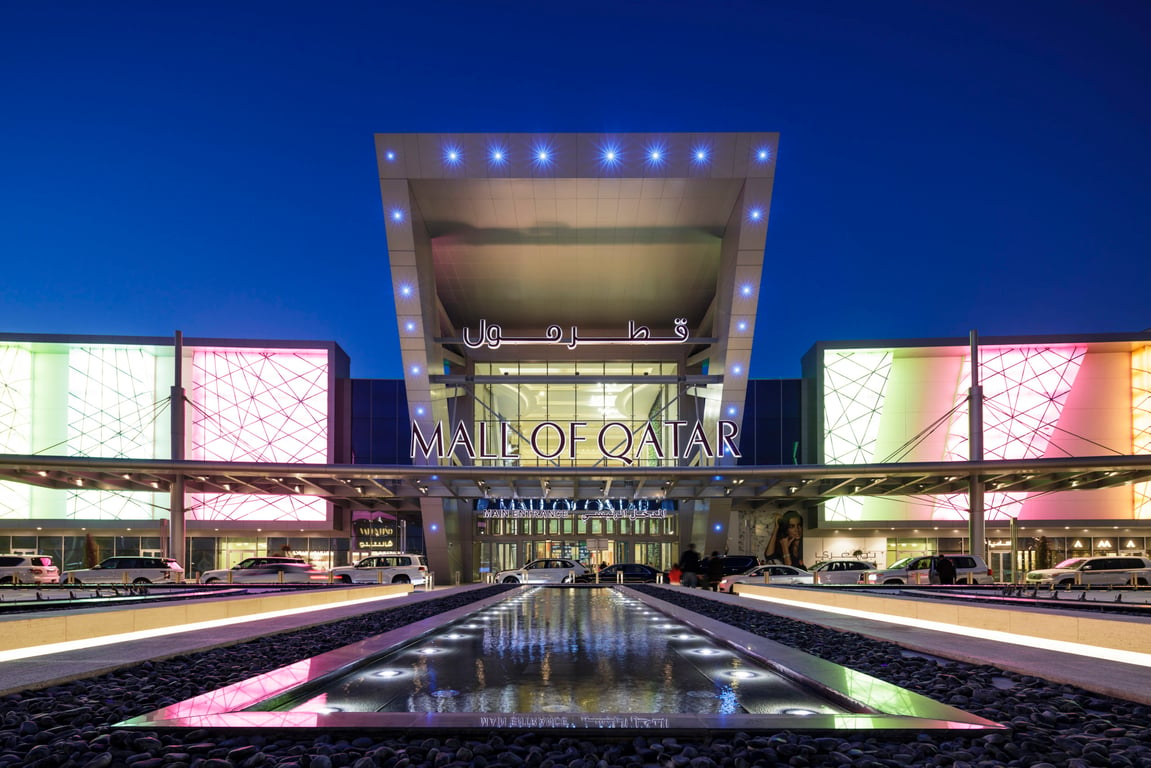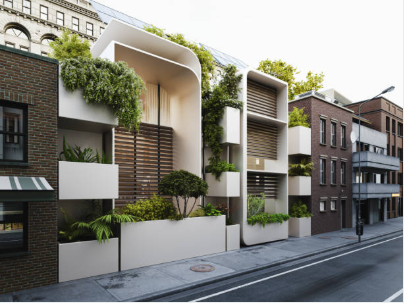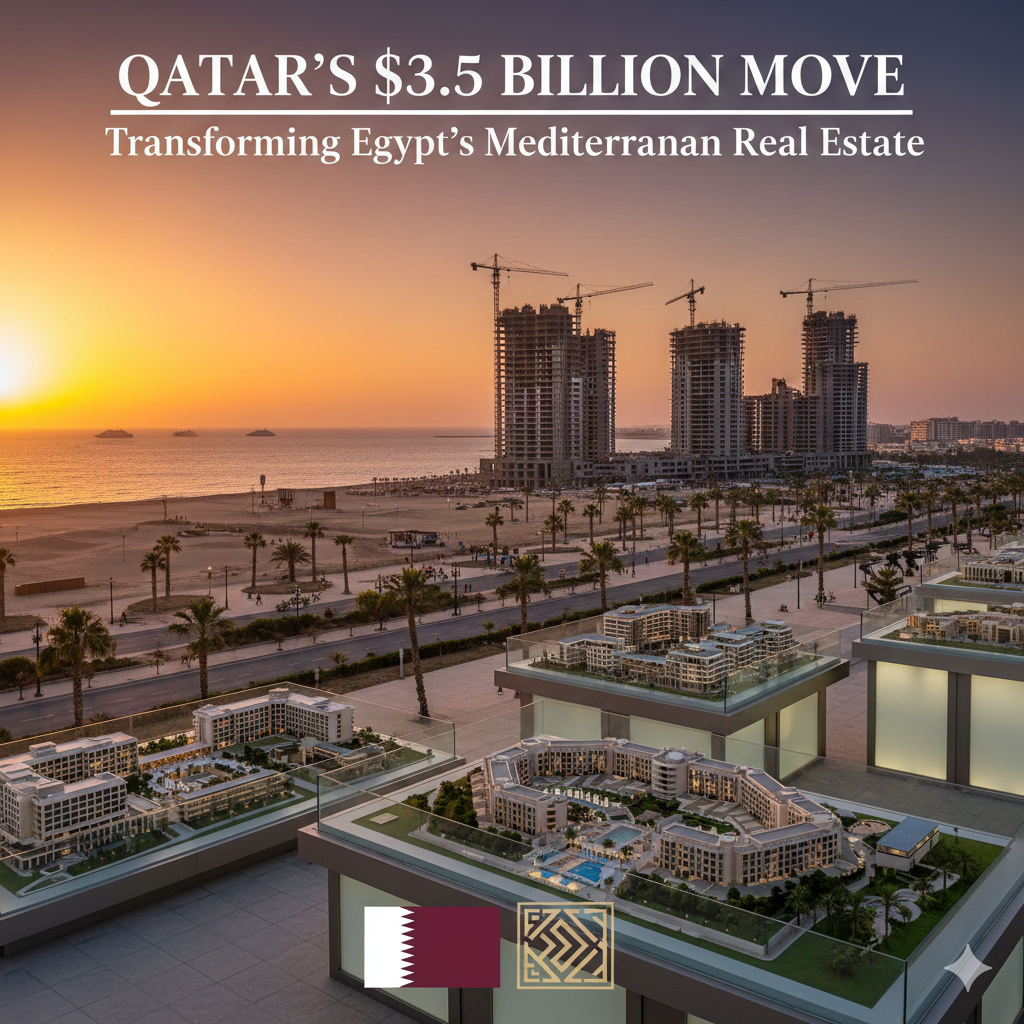Qatar's infrastructure has been revolutionized from a modest Pearl diving place to a global energy finance and tourism powerhouse. Development and modernization have been directed to the country's infrastructure planning. Iconic towers and splendid buildings have developed the evolution of the Qatar skyline. The government and the developers have made ambitious efforts to decorate the skyline by combining cultural heritage and modern architecture. This dual approach has transformed the country's infrastructure from traditional architecture to modern marvels. Let's discuss it in further detail.
About Qatar Skyline

The architectural landscape is more than luxury and extravagance. The skyline is situated in the heart of the capital city, Doha. It has marvelous grand structures and high-rise buildings that reflect the journey of evolution. The iconic Burj Qatar is a fantastic example of architectural ingenuity. This cylindrical-shaped skyscraper is a contemporary-designed tower that has intricate patterns. It reflects its identity as the best model of modern architecture. The Qatar National Library is a prestigious architectural legacy model. It is a fantastic building, but more than an advanced design and layout. It symbolizes the country's commitment to the vision of modern architecture and traditional heritage. It is also a symbol of commitment to education and cultural preservation.
In the middle of the 20th century, architecture was very simple, shaped by the harsh desert climate. These structures simplified those needed for development. The need for sustainable living convinced people to move towards sustainable structures. Al Zubarah Fort is a prime example of traditional architecture. It was built strategically in the late 18th century with the best construction materials. In the 21st century, the National Vision 2030 provided long-term development objectives with advanced society development.
Now, some projects showcase standard living styles and luxury lifestyles. The construction sector follows international standards to promote more tourism and real estate. The most exceptional projects are developed in West Bay, Lusail, and The Pearl, Doha's most beautiful locations and tourist destinations. The Burj Doha is a mind-blowing tower that adds glamor and dignity to the Qatari skyline and is among the top skyscrapers in Qatar.
Revolutionary Developments
Qatar's architecture, compared to other Middle East countries, is impacted by Islamic design. Qatari engineering has held its Islamic embodiment, apparent in its mosques' simple, humble plans. This custom stretches to different structures, highlighting numerous beautifying components, such as curves, specialties, complicatedly cut mortar designs, gypsum screens, and parapets on walls and pinnacles.
The country's blistering desert environment vigorously impacted the choice of building materials in customary design. Harsh stones obtained from rough slopes or beachfront regions were usually utilized. These stones were deliberately organized in lines, with mud from the Persian Bay filling in as the limiting specialist. This earth was additionally used to cover wall surfaces inside and outside and fill the holes between stones. Roofs were likewise covered with earth.
In circumstances where stones were light, mud blocks were occasionally substituted. As development strategies advanced, earth, which was unacceptable for the blustery winter season, was progressively supplanted with gypsum mortar for putting up walls. Different kinds of wood were integrated, especially wooden bars for supporting roofs. Limestone, quarried from neighboring rough slopes, was additionally occasionally utilized.
Construction Material & Decoration
The Qatari Peninsula, primarily limestone, has been a building material for centuries. Locally available stones, such as coral slabs and pebbles, were used in construction, including wall masonry, niches, and lintels. Natural clay was used as a bonding material in masonry but was susceptible to weather conditions. Gypsum, sourced from Al Khor, Simaisma, and Fuwairit, was necessary for plastering walls, making molds, and improving weather resistance.
Palm trunks were used extensively for roofing in traditional Qatari houses, providing structural support but less load-bearing. Danshil, a stabilized wood, was used in roofing, door lintels, and structural connectors. Mangrove stems were used as mats for roofing, and bamboo was used indoors in chests and cabinets. Duun, palm branches, and teak wood were also used in construction. Prized for its strength and durability, Tamarisk wood was used in various construction elements. The places of well-off Qataris and Bay residents are described by mind-boggling gypsum decorations, frequently mathematical or plant-based.
Wooden entryways and windows are likewise improved, in some cases highlighting brilliant glass. Outside walls may be finished with breaks and curves, while inside walls are put with recorded gypsum boards and friezes. Rawashin, or recessed specialties, are typically utilized to put away lights and other things, adding functional and enlivening components to the rooms. The Qatari Peninsula's diverse construction materials contributed to the region's rich history and architectural heritage.
The Evolution of Qatar's Skyline
Pre-20th Century:
Qatar's architecture is represented by traditional Arabian designs, including forts, souqs, and courtyard houses made from coral rock and limestone.
Early 1900s:
The discovery of oil brings wealth and influences the architectural landscape. Still, traditional styles remain predominant, with structures like the Al Koot Fort and traditional Qatari homes.
1950s-1970s:
The oil boom led to rapid urbanization. Modern building techniques were introduced, but architecture largely retained traditional elements, with low-rise buildings dominating the skyline.
1980s-1990s:
The rise of skyscrapers begins, blending traditional motifs with modern engineering. Iconic structures like the Sheraton Grand Doha Resort & Convention Hotel symbolize heritage merging with contemporary design.
2000s:
The construction of modern skyscrapers such as the Doha Tower and Tornado Tower transformed Doha's skyline. These showcase innovative designs and advanced construction technologies.
2010s:
The skyline continues to evolve with the completion of architectural marvels like the Aspire Tower and the Lusail Iconic Stadium Tower, reflecting Qatar's ambitions on the global stage.
2020s:
Qatar's skyline now consists of a blend of ultramodern skyscrapers and luxury towers. It includes the QP District Tower and Al Fardan Residences, representing the country's rapid development and vision for the future.
Present Day:
Qatar's skyline symbolizes transforming from a traditional society to a global hub. Its mix of modern marvels pays homage to its cultural heritage while embracing futuristic designs.
Modern Architecture
Qatar has pinpointed its put on the world guide with noticeable worldwide milestones in the past twenty years, including Education City, which grandstands engineering from various planners, including Rem Koolhaas, who planned the Qatar National Library in 2018, and the Qatar Establishment base camp in 2014. Among Qatar's outstanding architects is Japanese designer Arata Isozaki, who contributed to planning endless structures in Schooling City, including the Qatar Public Assembly Hall (QNCC), the Aesthetic Sciences and Science Building (LAS), and the Qatar Establishment Formal Court.
Qatar's specialty drives have extended colossally recently, with the launch of enormous, incredible activities, including the Doha Fire Station, which displays craftsmanship at the city's core. Expressions and galleries were critical in developing Qatar's travel industry and welcoming people to discover Qatar's experiences and legacy. The Public Historical Center of Qatar, Mathaf: Bedouin Gallery of Current Craftsmanship, Msheireb Exhibition Halls, and the Gallery of Islamic Arts have been opened.
Sheikha Al-Mayassa bint Hamad canister Khalifa Al-Thani plays had a significant impact in carrying craftsmanship to Qatar, especially with the most recent craftsmanship establishments at the Hamad International Airport (HIA) exhibiting bits of work by various worldwide specialists as a team with Qatar Galleries Authority. Under the direction of the Chief of Qatar Establishment, Sheikha Moza bint Nasser, Instruction City has turned into a permanent spot for futuristic structures. It has started projects with overall planners adding to the local area's structure of schools, colleges, workplaces, and facilities.
Modern Architectural Towers in Qatar
- Doha Tower
- Tornado Tower
- Aspire Tower
- Burj Qatar
- Al Bidda Tower
- Lusail Iconic Stadium Tower
- Palm Tower
- QP District Tower
- Kempinski Residences & Suites Tower
- Al Fardan Residences
Architecture in Education City
- Qatar National Convention Center
- Qatar Foundation Ceremonial Court
- Qatar Foundation Headquarters
- Northwestern University in Qatar
- Carnegie Mellon University in Qatar
- Virginia Commonwealth University in Qatar
- Weill Cornell Medical College in Qatar
- Liberal Arts and Science Building
- Texas A&M University in Qatar
- Qatar Academy
- Qatar National Library
Historical Forts
- Murwab Fort
- Ar Rakiyat Fort
- Ath Thaqab Fort
- Al Wajbah Fort
- Zubarah Fort
- Al Koot Fort
Evolution in Qatar Real Estate
Qatar's property market and real estate sector have evolved dramatically over the past few decades. Initially dominated by traditional architecture and modest housing, the landscape transformed with the discovery of oil, leading to rapid urbanization and infrastructure development. The 2000s saw a real estate boom, with iconic projects like The Pearl-Qatar and Lusail City reshaping the market. Today, Qatar's real estate sector is marked by luxury developments, state-of-the-art commercial spaces, and sustainable smart cities, reflecting the country's ambition to become a global economic hub and a luxury place to accommodate a diverse population. Qatar's real estate sector now features modern properties like luxury apartments, villas, serviced residences, luxury hotels, and smart homes. Saakin Inc. is the best platform for finding these properties, offering comprehensive listings across Qatar.
Conclusion
The modern buildings and fantastic Qatar skyline reflect the excellent architecture more than designs and layouts. The evolution of contemporary architecture is fascinating and has been developing for many years. The country continues to grow and evolve; it's a skyline that will continue to change by adopting the latest trends in architectural styles. This is the modern time that has sustainable and technological developments. However, there is a balance between tradition and modernity that is part of the country's cultural heritage. This beautiful landscape provides a brighter vision with ambitious objectives for its people. It is a powerful symbol of evolution in architectural marvels that has its specific value in the world.
FAQs
How has Qatar’s skyline evolved?
Qatar’s skyline has transformed from traditional low-rise buildings to modern skyscrapers and luxury towers.
What are some iconic modern buildings in Qatar?
Iconic buildings include Doha Tower, Tornado Tower, and Aspire Tower.
How does traditional architecture influence Qatar’s modern buildings?
Many modern buildings in Qatar incorporate traditional elements like geometric patterns and Islamic art.
How can I find properties on Saakin.qa?
Use the search function on SaakinQatar to filter properties by location, type, and price.
Read More: Best Stunning Buildings in Doha Corniche: Exploring the Architectural Marvels
Comments
No comments yet.
























